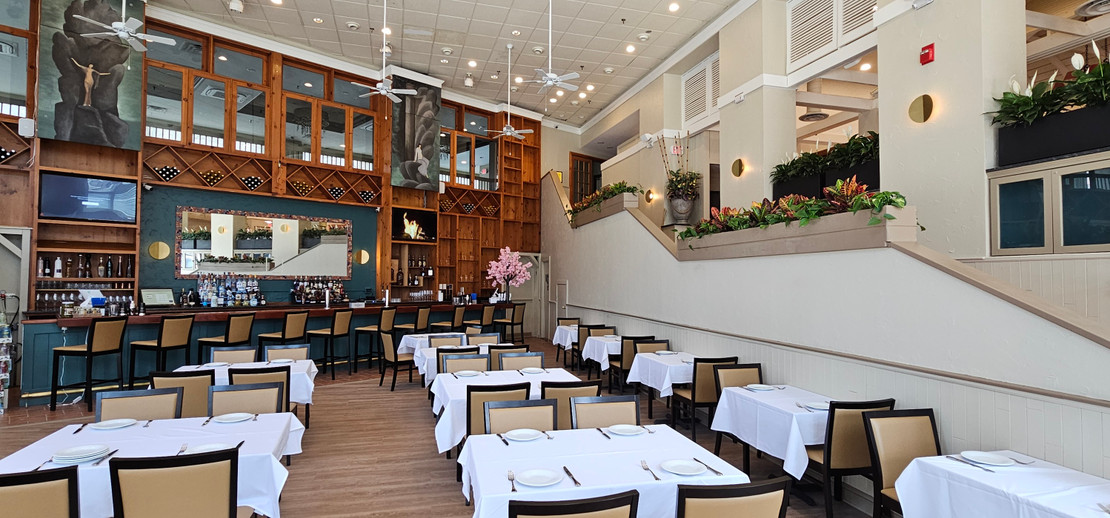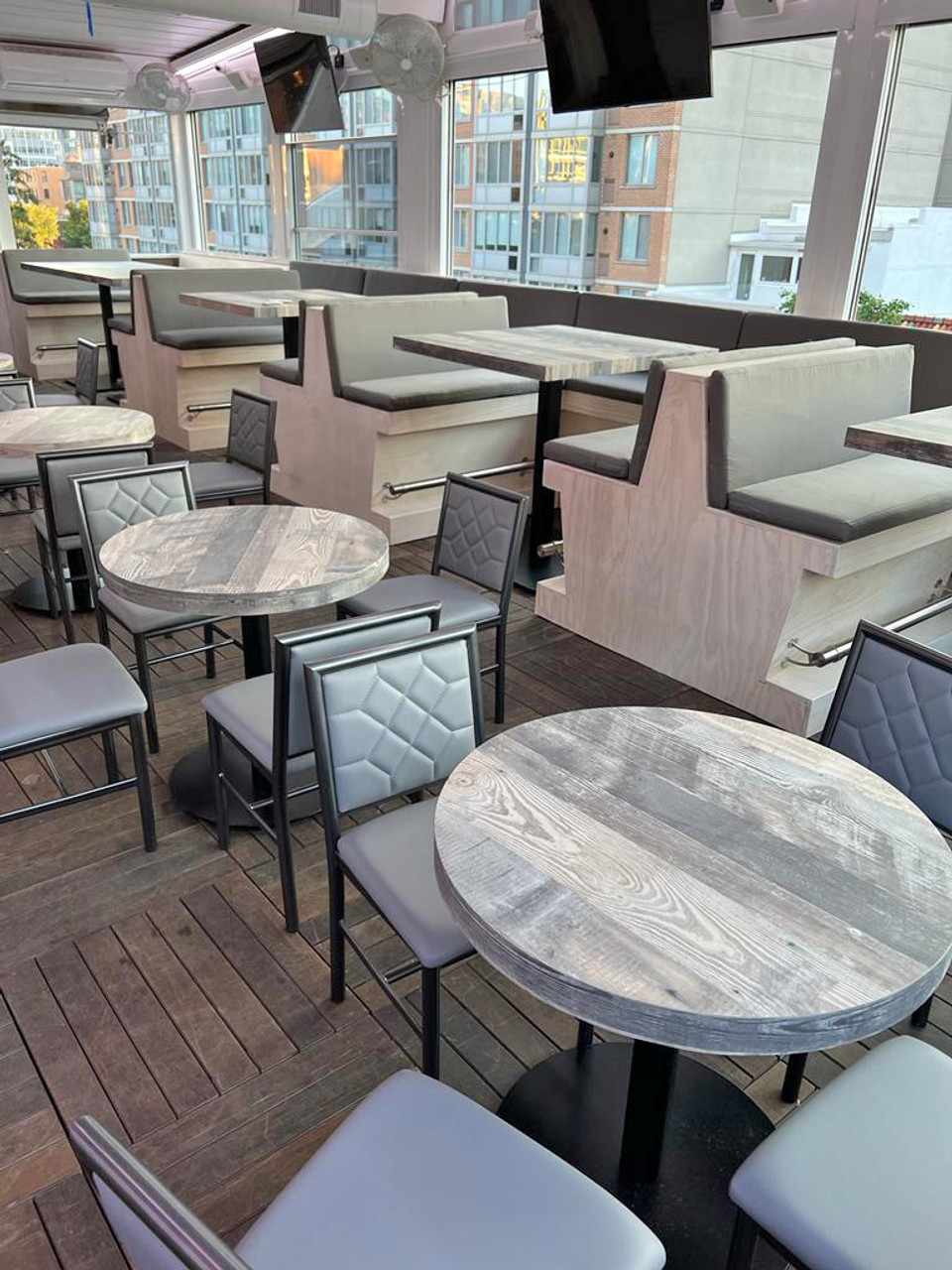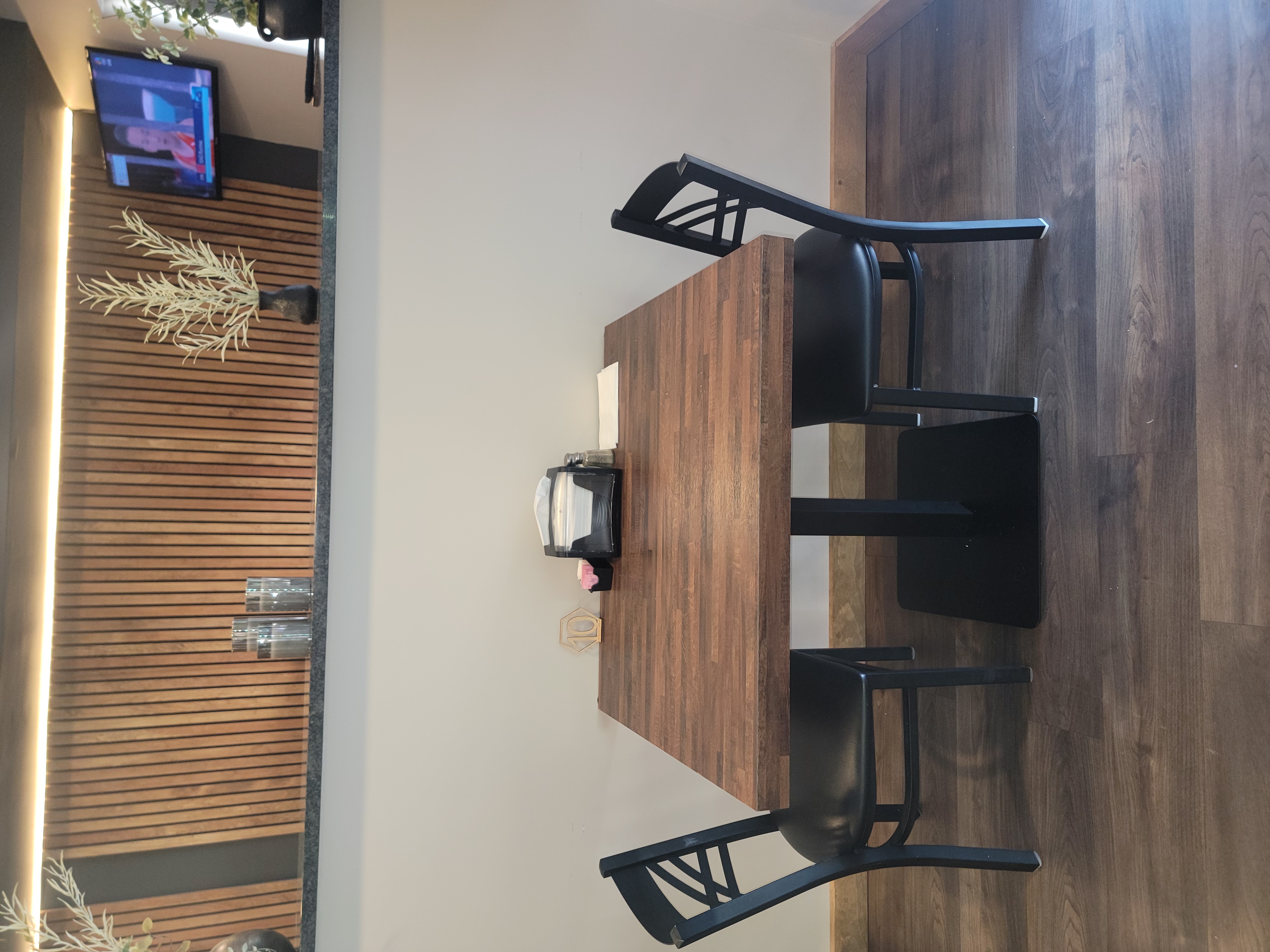
How to Choose the Perfect Table Top for Your Establishment
How to Choose the Perfect Table Top for Your Establishment
Selecting the right table top shape for a restaurant is essential because it influences both the dining experience and the efficiency of the space. The shape also impacts traffic flow, allowing servers to navigate efficiently and enhancing customer comfort. By thoughtfully choosing table shapes that suit the restaurant's layout and atmosphere, owners can optimize space, improve guest interactions, and create a welcoming environment that keeps customers coming back.
PLUSES:
- Encourages Conversation: Round tables allow everyone to face each other, making it easier to talk and creating a warm, inclusive feel.
- Fits Odd-Shaped Spaces: With no corners, round tables work well in unique spaces like alcoves or by windows.
- Safer Design: The rounded edges are safer, especially around children, elderly patrons, or in tight spaces.
MINUSES:
- Limited Seating: Round tables usually seat fewer people than rectangular ones, which might be a downside in small spaces.
- Hard to Reach Center: At larger round tables, items in the middle, like condiments, can be tough to reach.
- Less Efficient in Square Rooms: In perfectly square or rectangular rooms, round tables may not use the space as well.
Best For:
- Fine Dining: Great for promoting conversation and adding elegance.
- Cafes and Coffee Shops: Perfect for small groups or solo guests.
- Hotel Breakfast Areas: Easy to arrange to fit different group sizes.

PLUSES:
- High Mobility: Square tables are incredibly adaptable. To seat larger groups, simply combine two or more tables. For more separation, pull them apart.
- Visually Appealing: The symmetrical design brings a sense of balance and order, creating attractive grid-like patterns.
- Equal Seating Space: With equal sides, each guest has the same amount of table space, providing a comfortable and balanced setup.
- Ideal for Square Rooms: The shape fits well in square spaces, making efficient use of the area.
MINUSES:
- Corners: The table's corners can be inconvenient, especially in smaller spaces, where they might obstruct pathways or pose a tripping risk.
- Conversation Flow: While side-by-side seating encourages conversation, guests seated diagonally might feel too far apart, making interactions slightly awkward.
Best For:
- Dining and Quick-Service Restaurants: Provides adaptable seating options.
- Bars and Taverns: Works well in corners or along walls to save floor space.
- Cafés and Dessert Shops: Perfect for small gatherings or families.

PLUSES:
- Spacious Seating: Rectangular tables can seat a larger number of people, especially along their length, making them ideal for family meals or group gatherings.
- Space Efficiency: These tables work well with booth from one said and dining chairs on the opposite side, or with extended seating like benches, maximizing floor space.
- Various Use: The classic rectangular shape suits a wide range of settings, from casual diners to more formal environments.
- Clear Seating Arrangement: In settings like business meetings or formal dinners, having a clear "head" of the table can be beneficial.
MINUSES:
- Less Intimate for Conversation: Guests seated at opposite ends may struggle to have a conversation without raising their voices.
- Requires More Room: To seat guests comfortably on both sides, rectangular tables need more space, which might not be ideal for smaller venues.
- Limited Mobility: Due to their larger, heavier design, rectangular tables are harder to move and rearrange compared to round or square options.

Conclusion
The perfect size allows for efficient use of space, maximizing seating capacity without overcrowding. It ensures guests can enjoy their meals or gatherings with ease, encouraging a relaxed and enjoyable experience. The right fit also complements the layout and flow of the venue, making it easier for staff to serve efficiently and enhancing overall aesthetics. Ultimately, the right table top size is key to balancing style, comfort, and practicality, supporting both guest satisfaction and operational efficiency.